| Amperage | Voltage | Weight | Dimensions | Rating | |
|---|---|---|---|---|---|
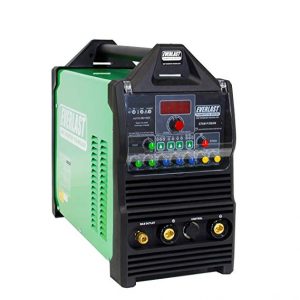 Everlast PowerTIG 200DV Everlast PowerTIG 200DV | 200 | 110/220V AC/DC | 60 pounds | 24 x 9 x 17 inches | 5.0 |
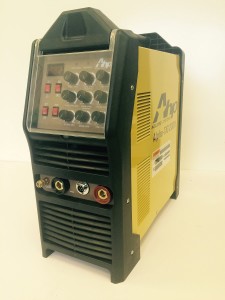 AHP AlphaTIG 200X AHP AlphaTIG 200X | 200 | 110/220V AC/DC | 69 pounds | 19 x 23 x 12 inches | 4.7 |
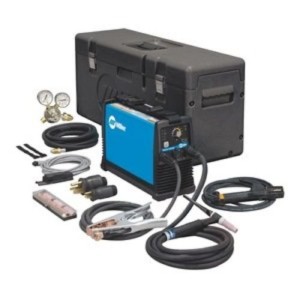 Miller Maxstar 150 STL Miller Maxstar 150 STL | 150 | 115/230V AC | 40.4 pounds | 13.2 x 5.5 x 9 inches | 4.7 |
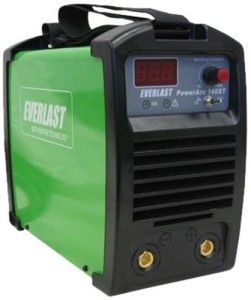 EVERLAST PowerARC 140 EVERLAST PowerARC 140 | 140 | 120/240V DC | 24.8 pounds | 20 x 12.5 x 13.5 inches | 4.3 |
 Everlast PowerTIG 250EX Everlast PowerTIG 250EX | 250 | 240V AC/DC | 60 pounds | 24 x 9 x 17 inches | 4.2 |
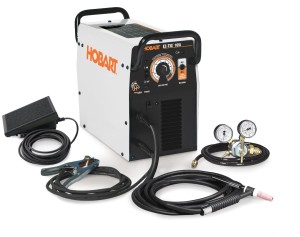 Hobart EZ TIG 165i Hobart EZ TIG 165i | 165 | 230V AC/DC | 60 pounds | 26.8 x 13.7 x 20.8 inches | 3.6 |
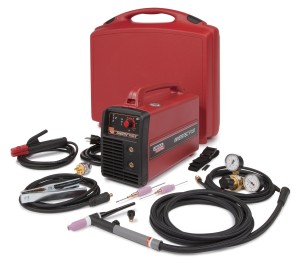 Lincoln Invertec V155-S Lincoln Invertec V155-S | 155 | 120/230V | 14.7 pounds | 15.4 x 6.2 x 11.3 inches | - |
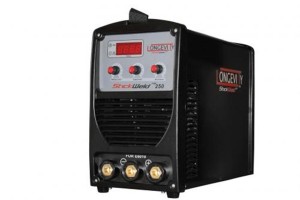 LONGEVITY StickWeld 250 LONGEVITY StickWeld 250 | 250 | 110/220V AC/DC | 32 pounds | 17 x 8 x 12 inches | - |
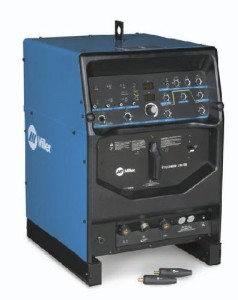 Miller Syncrowave 250 DX Miller Syncrowave 250 DX | 250 | 230V AC | 583 pounds | 29.4 x 40.2 x 52.7 inches | - |
Tungsten Inert Gas (TIG) welding, otherwise known as Gas Tungsten Arc Welding (GTAW), is a more advanced welding process that achieves high quality and good looking welds necessary for highly cosmetic applications involving thin and heat-sensitive metals. There are a number of TIG welders available on the market that comes with the right features and requirements for your specific welding needs.
Here is our review of the best TIG welders categorized by amperage.
100-140 AMPS
Lotos TIG140
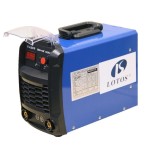 Lotos TIG140 is a compact yet powerful inverter Lift Start welder that provides MMA TIG and Stick welding functions. It is recommended for stainless and ferrous steel, copper and other metal materials. Its versatile features include 120V/240V capability and dual frequency (50Hz/60Hz), which allow you to operate with different power sources. Product is packed in a high-impact carry case and includes a TIG torch, pigtail, ground clamp, stick electrode and other accessories.
Lotos TIG140 is a compact yet powerful inverter Lift Start welder that provides MMA TIG and Stick welding functions. It is recommended for stainless and ferrous steel, copper and other metal materials. Its versatile features include 120V/240V capability and dual frequency (50Hz/60Hz), which allow you to operate with different power sources. Product is packed in a high-impact carry case and includes a TIG torch, pigtail, ground clamp, stick electrode and other accessories.
EVERLAST PowerARC 140
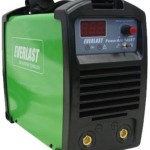 EVERLAST PowerARC 140 ranks high among welders in 100-140 amperage range due to its stable and smooth welding performance. Some of its impressive features include the Automatic Hot Start for reduced electrode sticking, DINSE 25 mm style connectors for easy connection, and digital display for hassle-free current setting and repeatability. Purchase includes standard tools and accessories such as a stick electrode holder, 17V Series tig torch, work clamp, wire brush, and a Lift Tig feature.
EVERLAST PowerARC 140 ranks high among welders in 100-140 amperage range due to its stable and smooth welding performance. Some of its impressive features include the Automatic Hot Start for reduced electrode sticking, DINSE 25 mm style connectors for easy connection, and digital display for hassle-free current setting and repeatability. Purchase includes standard tools and accessories such as a stick electrode holder, 17V Series tig torch, work clamp, wire brush, and a Lift Tig feature.
150-180 AMPS
Hobart EZ TIG 165i
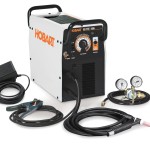 Hobart’s EZ-TIG 165i is the ultimate 230V AC/DC welding equipment ideal both for superior aluminum and stainless steel welding performance. Its easy-to-use interface with single knob and switch control allows for instant setup and use. It weighs light at 50 lbs (23 kgs) and comes with two carry handles for easy portability. Other impressive features of EZ-TIG 165i include its automatic high temperature shutdown and remote amperage control via foot control.
Hobart’s EZ-TIG 165i is the ultimate 230V AC/DC welding equipment ideal both for superior aluminum and stainless steel welding performance. Its easy-to-use interface with single knob and switch control allows for instant setup and use. It weighs light at 50 lbs (23 kgs) and comes with two carry handles for easy portability. Other impressive features of EZ-TIG 165i include its automatic high temperature shutdown and remote amperage control via foot control.
Miller Maxstar 150 STL
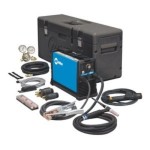 Miller 150 STL is among the best TIG welding machines in terms of performance and portability. Utilizing an inverter-based power source, it provides superior arc starts and impressive weld puddle control in both TIG and Stick settings. At less than 14 pounds, it can be carried easily to offsite maintenance and repair jobs. Its compact design also eliminates unwanted cable clutter and the need for long lead extensions. It can also be used plugged and connected on 115 and 230 volt input power source without the use of any tools.
Miller 150 STL is among the best TIG welding machines in terms of performance and portability. Utilizing an inverter-based power source, it provides superior arc starts and impressive weld puddle control in both TIG and Stick settings. At less than 14 pounds, it can be carried easily to offsite maintenance and repair jobs. Its compact design also eliminates unwanted cable clutter and the need for long lead extensions. It can also be used plugged and connected on 115 and 230 volt input power source without the use of any tools.
Lincoln Invertec V155-S
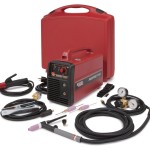 The Invertec V155-S is lightweight at 15 lbs but it is packed with professional features for the most intensive jobs. It features SOFT and CRISP stick modes for efficient penetration control when working with varying types of electrodes. It also minimizes electrode sticking without compromise to Arc stability through its Auto-Adaptive Arc Force property. Its Fan-As-Needed feature also minimizes noise and prevents dust from entering and contaminating the machine.
The Invertec V155-S is lightweight at 15 lbs but it is packed with professional features for the most intensive jobs. It features SOFT and CRISP stick modes for efficient penetration control when working with varying types of electrodes. It also minimizes electrode sticking without compromise to Arc stability through its Auto-Adaptive Arc Force property. Its Fan-As-Needed feature also minimizes noise and prevents dust from entering and contaminating the machine.
200 AMPS
AHP AlphaTIG 200X
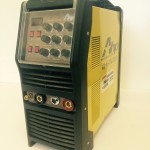 For versatility and superior performance, the new 2016 model of AHP’s AlphaTIG 200X is designed with advanced Power Width Modulation (PWM) using IGBT technology for best work on 110V and 220V capacities. It comes with a full range of pulse features and cleaning control to achieve quality TIG welding on aluminum, steel, and even thinner-gauge materials.
For versatility and superior performance, the new 2016 model of AHP’s AlphaTIG 200X is designed with advanced Power Width Modulation (PWM) using IGBT technology for best work on 110V and 220V capacities. It comes with a full range of pulse features and cleaning control to achieve quality TIG welding on aluminum, steel, and even thinner-gauge materials.
Everlast Power I-TIG 200T
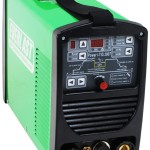 The Everlast Power I-TIG 200T is a performance driven welding machine that features a user-friendly digital interface for easy operation and maintenance. It has both TIG and Stick functions and comes with a programmable memory that stores up to nine programs and remembers the most recent setting used before shutdown. For maximum heat control, it operates with a fully adjustable TIG pulse frequency up to 500 Hz.
The Everlast Power I-TIG 200T is a performance driven welding machine that features a user-friendly digital interface for easy operation and maintenance. It has both TIG and Stick functions and comes with a programmable memory that stores up to nine programs and remembers the most recent setting used before shutdown. For maximum heat control, it operates with a fully adjustable TIG pulse frequency up to 500 Hz.
LONGEVITY Tigweld 200SX
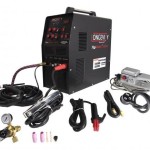 Longevity TIGWeld 200SX provides great welding experience with its efficient IGBT inverter technology and user-friendly features. It is designed with comprehensive controls to allow users to adjust the amps and other settings for a variety of needs. This powerful machine has an impressive maximum output of 200 amps for AC and DC TIG function and 140 amps on Stick. With foot pedal operation, it also allows for easy amperage limit settings and variable adjustments. To avoid untoward damage, it is also equipped with thermal overload protection that safely shuts the machine down for proper cooling.
Longevity TIGWeld 200SX provides great welding experience with its efficient IGBT inverter technology and user-friendly features. It is designed with comprehensive controls to allow users to adjust the amps and other settings for a variety of needs. This powerful machine has an impressive maximum output of 200 amps for AC and DC TIG function and 140 amps on Stick. With foot pedal operation, it also allows for easy amperage limit settings and variable adjustments. To avoid untoward damage, it is also equipped with thermal overload protection that safely shuts the machine down for proper cooling.
250 AMPS
Everlast PowerTIG 250EX
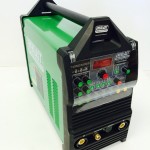 With superior performance and versatility, PowerTIG 250EX can answer to every need of professional welder. This AC/DC TIG welder has a maximum power output of 250 amps on single phase 240V with a 60% duty cycle. It is also equipped with remarkable features such as a fully adjustable pulse, AC balance control, Stick function with arc force control, as well as remote control functions for 2T/4T operation.
With superior performance and versatility, PowerTIG 250EX can answer to every need of professional welder. This AC/DC TIG welder has a maximum power output of 250 amps on single phase 240V with a 60% duty cycle. It is also equipped with remarkable features such as a fully adjustable pulse, AC balance control, Stick function with arc force control, as well as remote control functions for 2T/4T operation.
LONGEVITY StickWeld 250
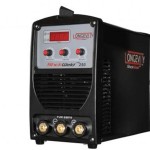 Equipped with a reliable power source, Longevity StickWeld 250 is capable of penetrating and burning 6010 and 6011 cellulose electrodes. It features a portable yet efficient IGBT inverter technology that works great for on-the-go jobs. It also has a built-in digital meter display for easy and accurate amperage readings. With 60% duty cycle at 40 degrees Celsius, StickWeld 250 also consistently runs hot even at longer operating periods.
Equipped with a reliable power source, Longevity StickWeld 250 is capable of penetrating and burning 6010 and 6011 cellulose electrodes. It features a portable yet efficient IGBT inverter technology that works great for on-the-go jobs. It also has a built-in digital meter display for easy and accurate amperage readings. With 60% duty cycle at 40 degrees Celsius, StickWeld 250 also consistently runs hot even at longer operating periods.
Miller Syncrowave 250 DX
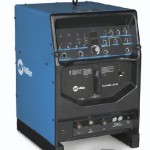 The industrial design and construction of Syncrowave 250 DX proves its reliability even in demanding situations. Built with Miller Squarewave technology, it efficiently provides arc stability, prevents arc rectification and eliminates tungsten erosion. In addition, its Syncro Start feature allows for Soft, Standard or Hot TIG function while its Adaptive Hot Start feature provides good arc strikes while preventing sticking.
The industrial design and construction of Syncrowave 250 DX proves its reliability even in demanding situations. Built with Miller Squarewave technology, it efficiently provides arc stability, prevents arc rectification and eliminates tungsten erosion. In addition, its Syncro Start feature allows for Soft, Standard or Hot TIG function while its Adaptive Hot Start feature provides good arc strikes while preventing sticking.
Overview of TIG Welding
Tungsten Inert Gas (TIG) welding is a popular type of welding process commonly used when precise welding is required. Also technically known as Gas Tungsten Arc Welding (GTAW), it utilizes a tungsten electrode and a metal workpiece to form an arc. It also uses an inert gas like argon to cool and shroud the arc area, and shield the weld pool and electrode.
TIG welding is a manual process that involves the use of both hands – one hand holds the TIG torch that creates the arc while the other adds the filler metal to the weld joint. Because of this, TIG is recognized as the most versatile method when dealing with different metals. It produces the highest quality weld necessary for critical weld joints, thin sections and other jobs needing high-quality work. With TIG welding, cleaner and well-defined joints are formed, thus requiring less finishing effort. It is frequently used in aluminum welding but also works with a wide range of metals and materials including titanium, copper, magnesium, nickel, and their alloys.
TIG welding also carries a number of disadvantages compared to other alternatives. It is a complicated process that can only be performed well by highly-skilled, professional workers. It is also more expensive and time-consuming compared to MIG and arc welding thus limiting productivity. It is also not advised for welding thick sections of metal. Lastly, it poses safety risks as it may also cause eye damage due to constant exposure to high intensities of light.
Choosing the Best TIG Welder
With the availability of a wide variety of TIG welding machines, selecting the right unit for home or shop use can be confusing and difficult. In most instances, choosing the best TIG equipment for your unique needs can spell the difference between business profit and operational loss. Buying a welder with the right specifications and features can save time and money by producing quality welds or minimizing the need for polishing and repairs.
The success of TIG welding process relies mainly on a number of factors including welder’s skill level, effectiveness of welding technique, the choice of shielding gas, and the type of electrode used, among others. When working on complex and critical projects, it is therefore important to use a TIG machine to optimize the creation of good-looking welds. The welder’s amperage, arc stability, duty cycle, AC/DC compatibility, and maneuverability are important factors to consider choosing a TIG welder.
A great TIG welder carries the following characteristics and features:
- A wide amperage range. A welder with an amperage range of 5 to 230 amps provides flexibility and the best possible scope to work on various metal types and thickness. It has the capacity to weld thin, 24-gauge stainless steels or ¼” thick aluminums. With wide amperage range, more applications are performed without need to secure multiple machines.
- Good arc stability. Aside from having a wide amperage range, a TIG machine shall essentially perform with good arc stability below 10 amps. Low amperage welding performance plays an important role in effective arc control, easy starting and high-quality crater fill capability.
- AC/DC compatibility. A great TIG welding equipment would offer both AC and DC options to allow welding a variety of materials. For aluminum and other self-oxidizing metals, AC power is most preferred for its good balance of cleaning and penetration power. DC power, on the other hand, penetrates harder metals like steel and deoxidized copper.
- High duty cycle. Duty cycle is related to the length of time the machine can weld before overheating or causing damage. For instance, a TIG welder with 25% duty cycle can be safely operated 15 minutes in every hour while those with 50% duty cycle can be used longer for 30 minutes per hour. Although not necessary for minor DIY projects, a TIG welding machine with high duty cycle is especially important for high demand operations.
- Portability. Portable welding may be needed for in-the-field maintenance and off-site jobs. In these cases, engine-driven TIG welders and machines with inverter technology may prove useful.
- Easy maneuverability. Great TIG welders have user-friendly features including a metal foot pedal for remote amperage control. This is particularly useful welding aluminum as it allows users to adjust the welding amperage when necessary.
In addition to these features, it is also important to look into the TIG welder’s durability, design and extra welding features. For example, some TIG welders feature a thermostatically controlled fan that provides cooling only when necessary. Selected TIG welders also have a Stick welding mode to provide greater capabilities.
Common TIG Welder Buying Mistakes
Without proper evaluation of welding needs and adequate research on welder specifications, buying mistakes are usually committed. A common mistake among new welders is buying a complex and expensive machine with unnecessary features and functions. For example, buying a TIG machine with AC compatibility may not be practical for home handymen and amateur welders who will not be welding with aluminum and magnesium sheets. For simple house repairs and farm projects, it is therefore wise to go for basic to mid-range welding machines.
Another common mistake is buying a unit with wrong input voltage. This is particularly true in situations when TIG machine needs higher input power than what’s locally available. To avoid this mistake, selecting a welder should be based on the voltage supply specific to the place or location where the machine will be used. For versatility, you may also opt for welders with IGBT technology that allows operating on two voltage levels.
Lastly, aside from calculating current needs, most users fail to consider future demands. Settling with low to average performance welders limit flexibility and capacity to work on projects that require higher accuracy. If you work with a variety of materials, it is therefore appropriate to purchase a versatile machine than buying multiple ones with limited applications and use.
Conclusion
Different TIG welding machines carry different prices, features and specifications. Purchasing a TIG welder, it is important not only to look into price but also consider other significant factors related to the machine’s performance attributes, versatility, and ease of use.
